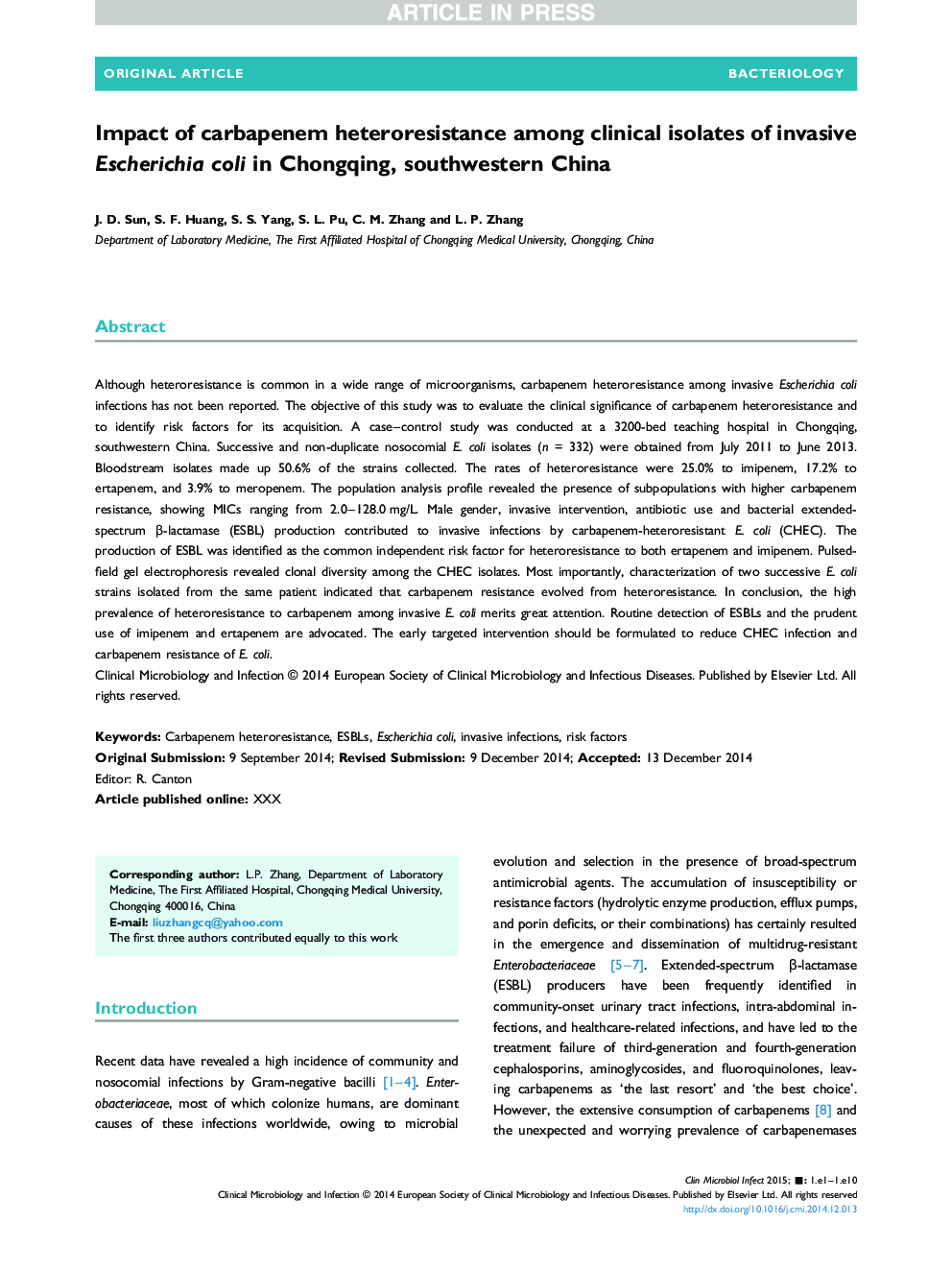| Article ID | Journal | Published Year | Pages | File Type |
|---|---|---|---|---|
| 6129639 | Clinical Microbiology and Infection | 2015 | 10 Pages |
Abstract
Although heteroresistance is common in a wide range of microorganisms, carbapenem heteroresistance among invasive Escherichia coli infections has not been reported. The objective of this study was to evaluate the clinical significance of carbapenem heteroresistance and to identify risk factors for its acquisition. A case-control study was conducted at a 3200-bed teaching hospital in Chongqing, southwestern China. Successive and non-duplicate nosocomial E. coli isolates (n = 332) were obtained from July 2011 to June 2013. Bloodstream isolates made up 50.6% of the strains collected. The rates of heteroresistance were 25.0% to imipenem, 17.2% to ertapenem, and 3.9% to meropenem. The population analysis profile revealed the presence of subpopulations with higher carbapenem resistance, showing MICs ranging from 2.0-128.0 mg/L. Male gender, invasive intervention, antibiotic use and bacterial extended-spectrum β-lactamase (ESBL) production contributed to invasive infections by carbapenem-heteroresistant E. coli (CHEC). The production of ESBL was identified as the common independent risk factor for heteroresistance to both ertapenem and imipenem. Pulsed-ï¬eld gel electrophoresis revealed clonal diversity among the CHEC isolates. Most importantly, characterization of two successive E. coli strains isolated from the same patient indicated that carbapenem resistance evolved from heteroresistance. In conclusion, the high prevalence of heteroresistance to carbapenem among invasive E. coli merits great attention. Routine detection of ESBLs and the prudent use of imipenem and ertapenem are advocated. The early targeted intervention should be formulated to reduce CHEC infection and carbapenem resistance of E. coli.
Related Topics
Life Sciences
Immunology and Microbiology
Microbiology
Authors
J.D. Sun, S.F. Huang, S.S. Yang, S.L. Pu, C.M. Zhang, L.P. Zhang,
